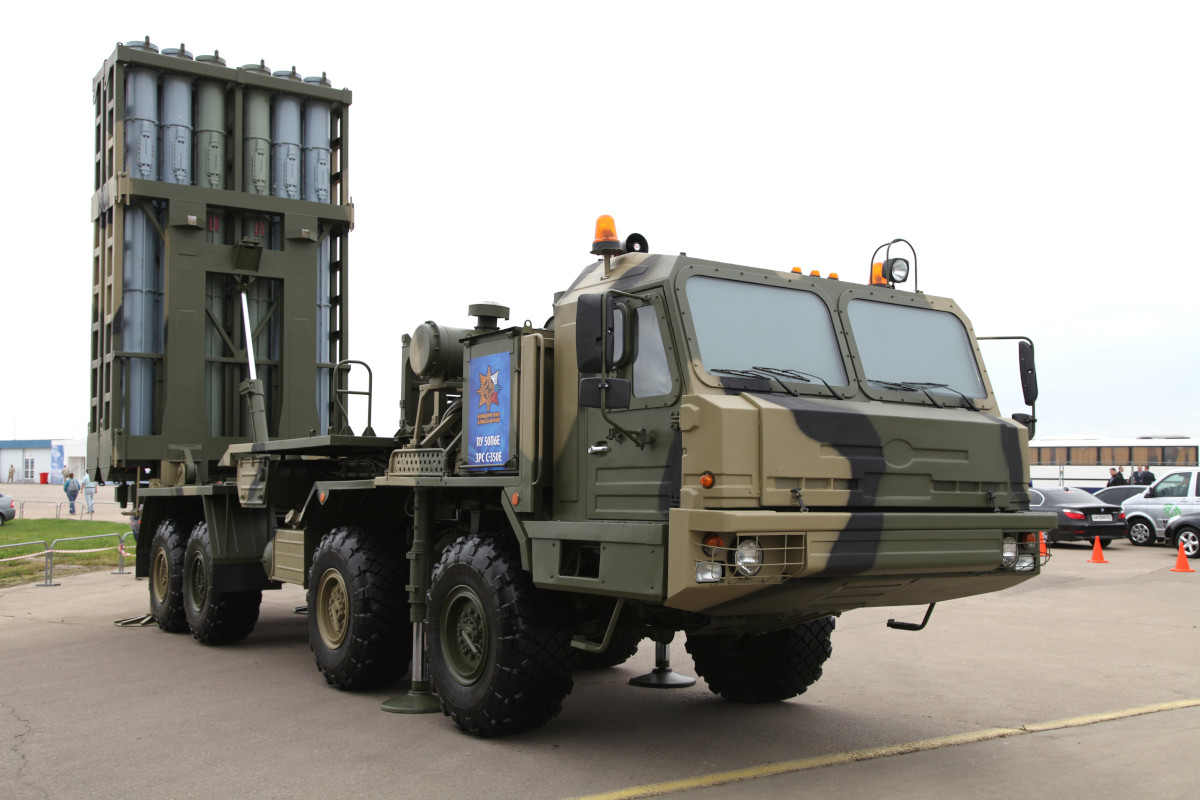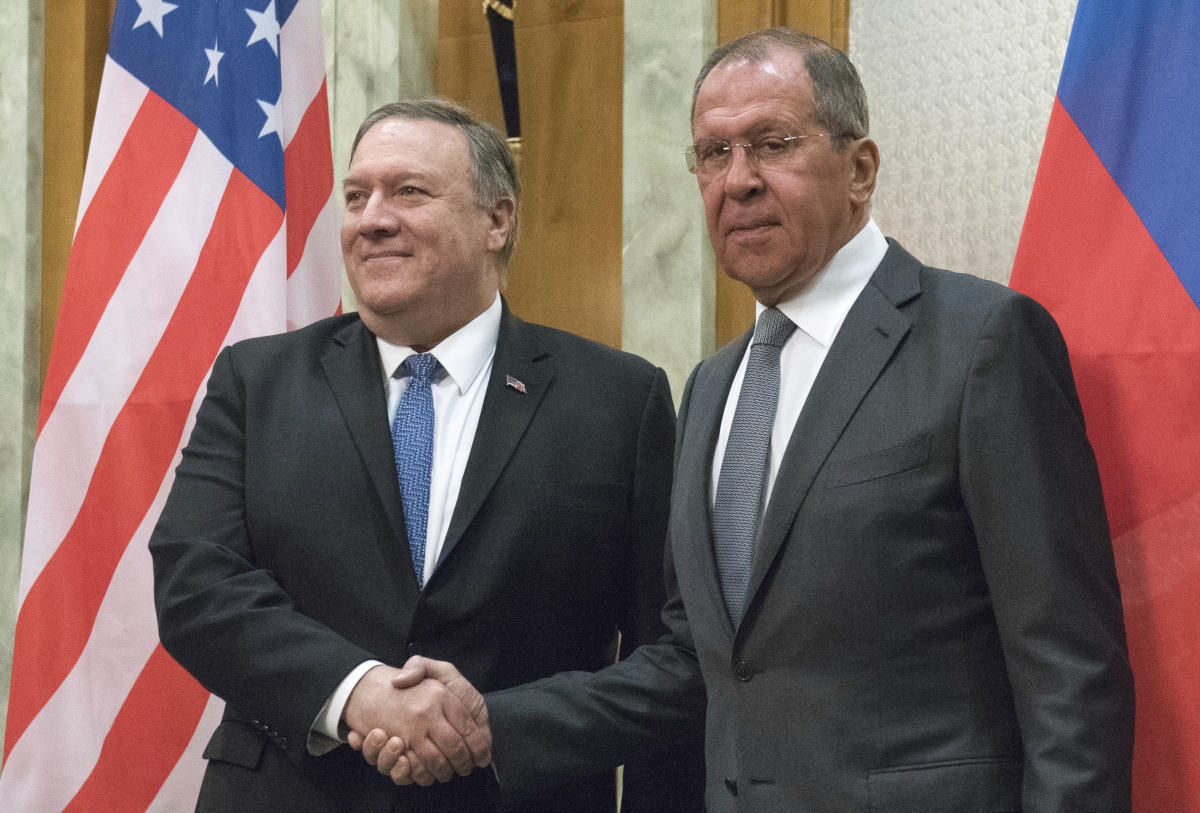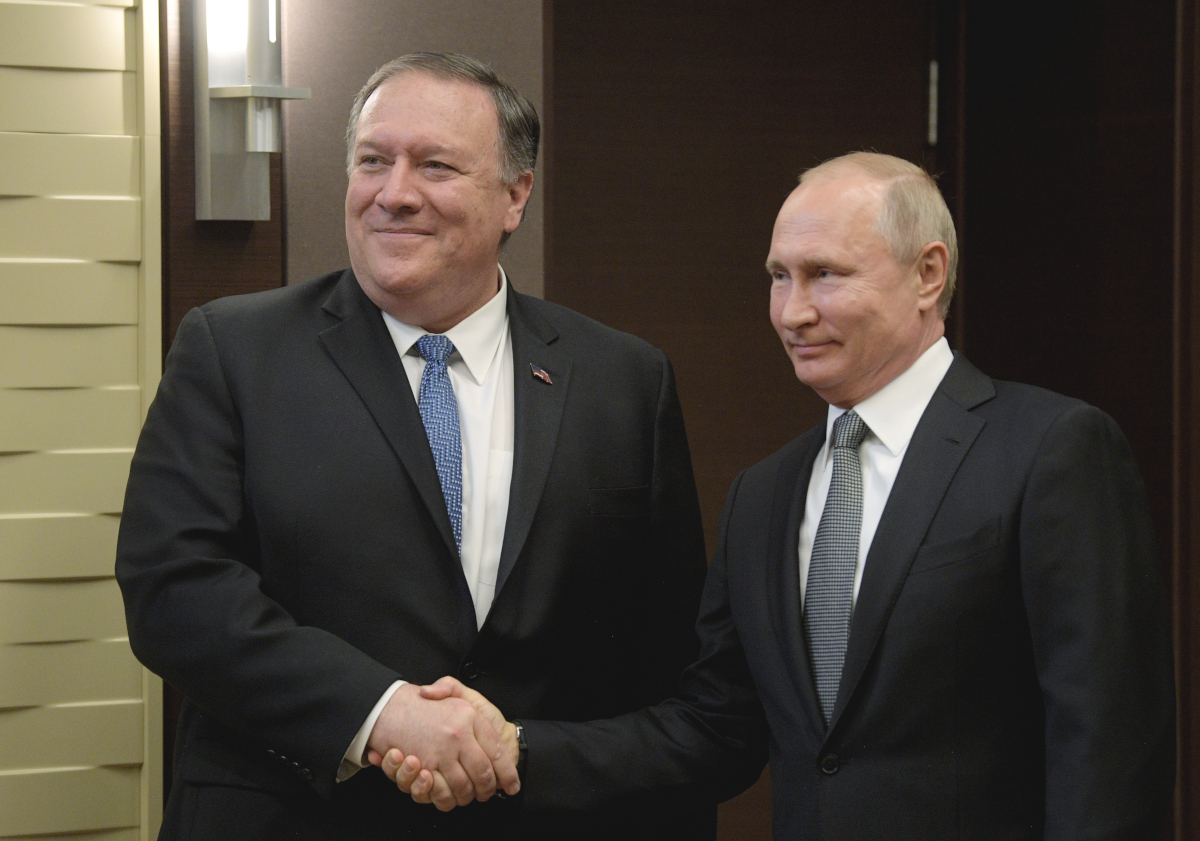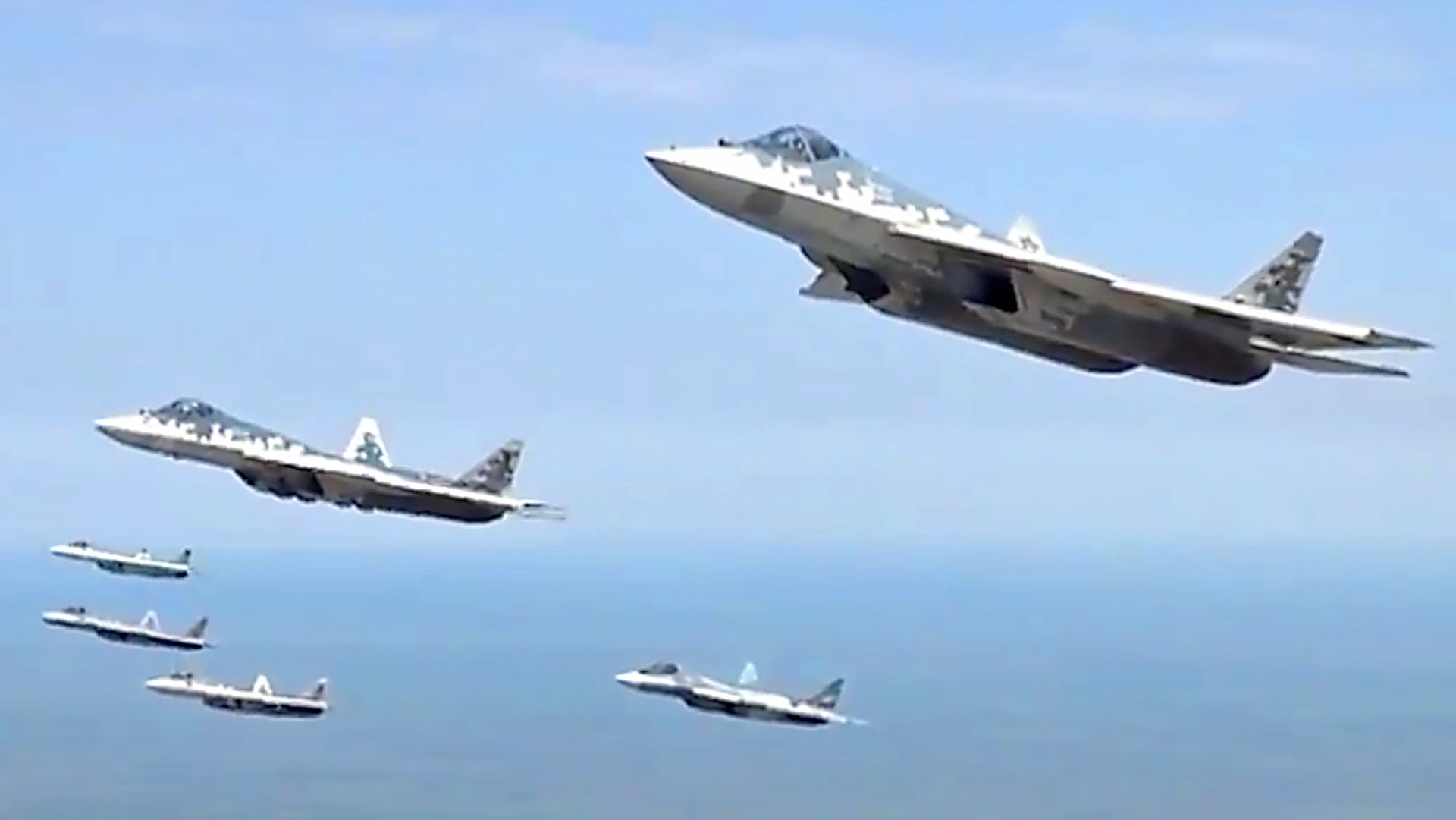Russian President Vladimir Putin flew to the country’s southwestern region today on board his IL-96-300PU presidential plane with an escort of six Su-57s, roughly half of the total number of the advanced fighter jets that the country has in total. Putin made the grand display as he traveled to the region to inspect various military units before departing for Sochi to meet with U.S. Secretary of State Mike Pompeo.
Putin arrived at the 929th Chkalov State Flight-Test Center in Russia’s southwestern Astrakhan region early on May 14, 2019. The facility is the Russian military’s largest research and development site for advanced aircraft, as well as air defense systems.
Just the sheer number of Su-57s flying together with Putin’s Il-96-300PU is notable. As of the end of 2018, the Russian Air Force had around a dozen flying examples of the aircraft, which has been in protracted development for more than a decade now. This appears to be the first time so many of the jets have flown together at once.

Russia has said that it is deferring serial production of the type, but is also hunting for new international partners to potentially jumpstart the program. The Kremlin recently made a public offer to Turkey, which could be facing expulsion from the F-35 Joint Strike Fighter program over opposition from the United States and its other NATO allies to a planned purchase of Russian S-400 air defense systems. Though certainly not an equivalent to the F-35, the Su-57, if it functions as advertised, does offer a number of advanced capabilities, which you can read about in more detail here.
After touching down at the Chkalov State Flight-Test Center, Putin inspected an array of advanced weapon systems, including the Kh-47M2 Kinzhal air-launched hypersonic missile and the modified MiG-31 Foxhound aircraft capable of carrying it. This is one of six super weapons the Russian President revealed in 2018 in a fiery speech that served, in general, as an assertion of the country’s continued strength in the face of hostile actions from its international competitors, chiefly the United States.
Putin also reportedly viewed an example of the still-in-development Sukhoi S-70 Okhotnik-B flying wing drone, though the Kremlin did noes not appear to have released any new pictures. The first pictures of this unmanned aircraft, which has reportedly been in development since at least 2011, emerged online earlier this year.
Beyond that, the Russian President also got a chance to inspect the latest models of the MiG Fulcrum and Sukhoi Flanker fighter jet families, including the MiG-35 Fulcrum-F and Su-35 Flanker-E. There was no mention of Putin receiving any updated information on Russia’s bomber programs, such as efforts to modernize the Tu-160 Blackjack and the Tu-22M Backfire, or the status of PAK DA advanced bomber, which the Kremlin insists is still in development, despite there being virtually no official information about it after more than a decade.
A variety of air defense systems were on display, too, including the new S-350 Vityaz medium-range surface-to-air missile system, which began serial production in March 2019, and multiple iterations of the Panstir point defense air defense system. Russia has heavily promoted Pantsir in recent years, highlighting its operational activities in Syria, though reports have emerged that have questioned its actual efficacy against both terrorists’ locally-made drones and Israeli air strikes.

Afterward, Putin left for the city of Sochi on the Black Sea to meet with U.S. Secretary of State Mike Pompeo. Kremlin spokesperson Dmitry Peskov dismissed the idea that the Russian President’s visit to the Chkalov State Flight-Test Center was meant to send a message to Pompeo ahead of their meeting.
“The president deals with military and industrial complex issues twice a year and the goal is to develop the military and industrial complex, rather than to send any signals,” Peskov said. “No conspiracy theories should be concocted here.”
Regardless, U.S.-Russia relations are at a particularly low point. But America’s top diplomat did take a very conciliatory stance ahead of an initial meeting with his Russian counterpart, Sergei Lavrov.
“I am here today because President Trump is committed to improving this relationship,” Pompeo told reporters. “We have differences and each country will protect its interests, look out for its own people. But we are not adversaries on every issue and I hope that we can find places where we have a set of overlapping interests and can truly begin to build out strong relationships, at least on those particular issues.”

Still, the United States and Russia are presently at odds on a host of issues, including, as noted, the collapse of the INF and potential new negotiations related to New START. Russia has also opposed the U.S. government’s support for opposition leader Juan Guaido in Venezuela and criticized the Trump Administration’s withdrawal from the controversial international deal over Iran’s nuclear program. On the other side, the United States regularly criticizes the Kremlin’s continued support for Syrian dictator Bashar Al Assad and its active role in the ongoing conflict in eastern Ukraine, among other things. The two countries have sparred over policy toward North Korea and accusations that the Russians are aiding Pyongyang in evading sanctions, too.
“We have many difference here,” Lavrov said in much more frank comments after the meeting. “We will continue to discuss the situation.”
Ahead of Pompeo’s subsequent meeting with Putin, the Russian leader did highlight that the conclusion Special Prosecutor Robert Mueller’s Russia investigation, saying that it “very objective” and concluded that then-candidate Trump and his campaign had not actively colluded with the Russian government. He, of course, did not mention the Mueller had made clear that the Kremlin had actively interfered with the 2016 U.S. President Election, something that Russia continues to deny in spite of the all of the available evidence.

“I’m hoping the situation is changing,” Putin said, referring to a purported desire for improved relations. “[I have] the impression that the president [Trump] is inclined towards the restoration of Russian-American ties, contacts and to solving issues together,” Putin added, saying this was what he understood after a recent call with his American counterpart.
But the Russian President’s visit to the Chkalov State Flight-Test Center earlier in the day certainly seemed to underscore that the Kremlin has no plans, at least in the near term, to abandon its aggressive foreign policy and the military modernization efforts that go along with it, regardless of whether or not U.S. relations with Russia improve.
UPDATE:
This is an even better video of the welcoming formation:
Contact the author: jtrevithickpr@gmail.com
